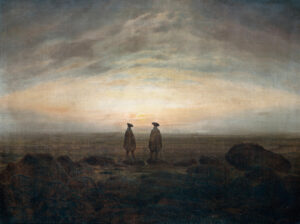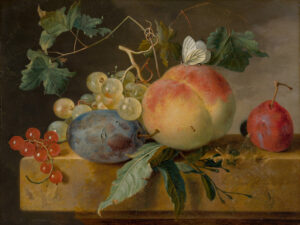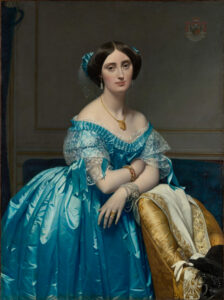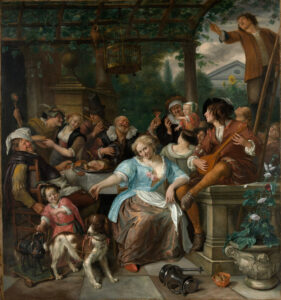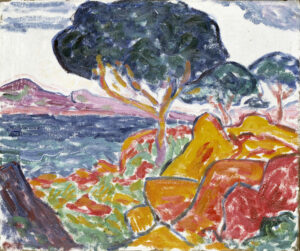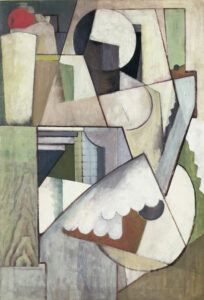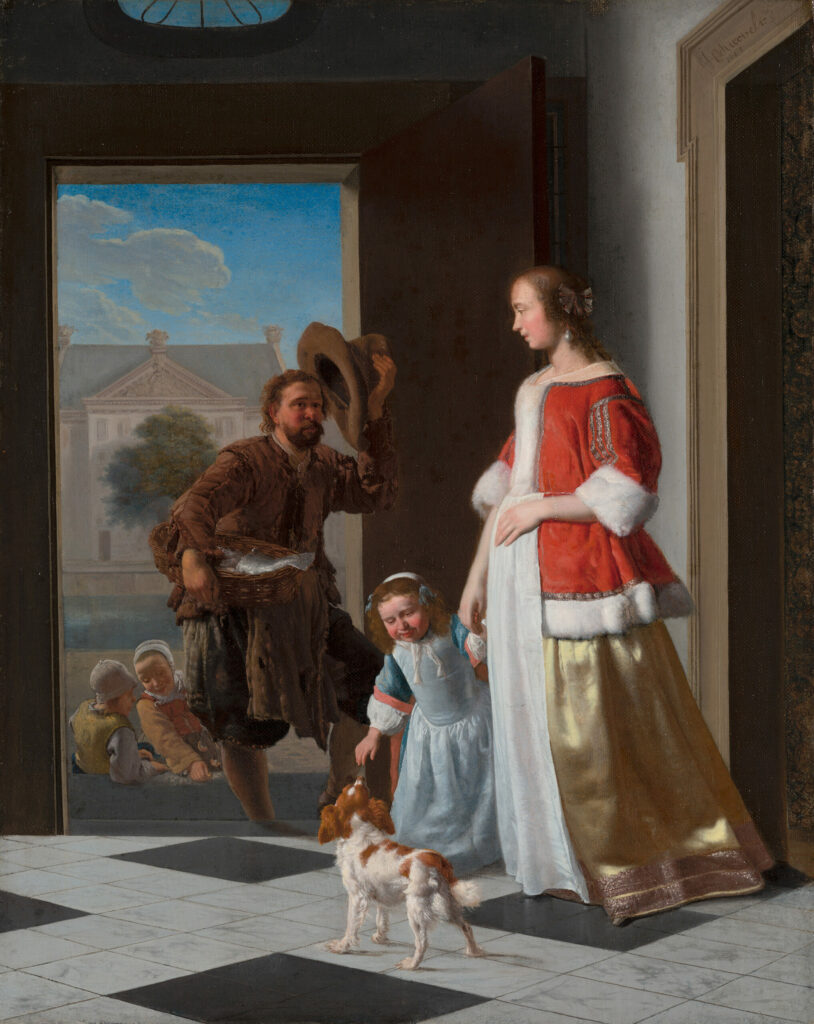
Ochtervelt depicts here an everyday scene, characteristic of Dutch genre painting.
On the threshold of a bourgeois residence, a fishmonger presents his wares to a young woman elegantly dressed in a red gown trimmed with ermine and a yellow skirt with satiny reflections. A little girl in a blue dress and a dog complete the domestic scene, introducing a note of family intimacy. The treatment of light reveals Ochtervelt’s technical mastery. The black and white checkered floor is a recurring element in Dutch painting symbolizing order and prosperity. The contrast between interior and exterior creates remarkable depth. The background reveals a classical architectural landscape and secondary figures, enriching the narrative. This work combines social observation, technical prowess, and celebration of bourgeois daily life.
Further information
- Jacob Ochtervelt, A Fishmonger at the Door, 1663
- Oil on canvas on panel, 55 x 44 cm
- Mauritshuis, The Hague, displayed in the Prince William V Gallery
- https://www.mauritshuis.nl/en/our-collection/artworks/195-a-fishmonger-at-the-door
Jacob Ochtervelt (1634-1682), Dutch painter from Rotterdam, embodies the excellence of the Dutch school in the genre of interior painting. Probably trained under Nicolaes Berchem in Haarlem, he belongs to the tradition of painters of bourgeois daily life, alongside Vermeer, De Hooch, and Metsu. Active in Rotterdam and later in Amsterdam, Ochtervelt developed a refined style characterized by meticulous attention to light effects, an elegant palette dominated by reds, yellows, and blues, and a balanced composition playing on architectural openings. His domestic scenes document the commercial and social practices of his time. His work, rediscovered in the 19th century, comprises approximately 130 authenticated paintings testifying to the cultural and economic wealth of the United Provinces in the 17th century.

